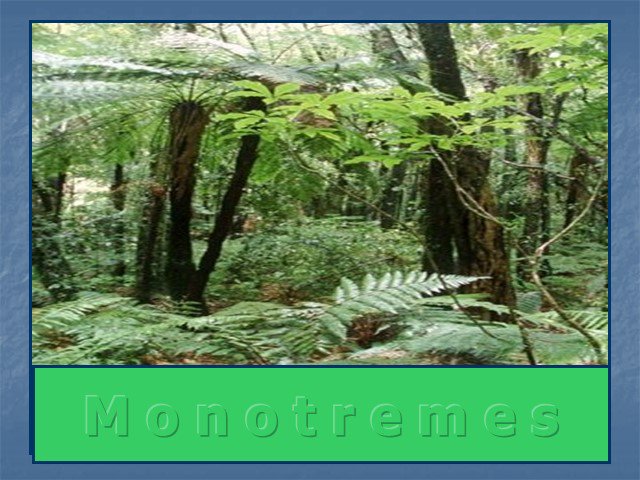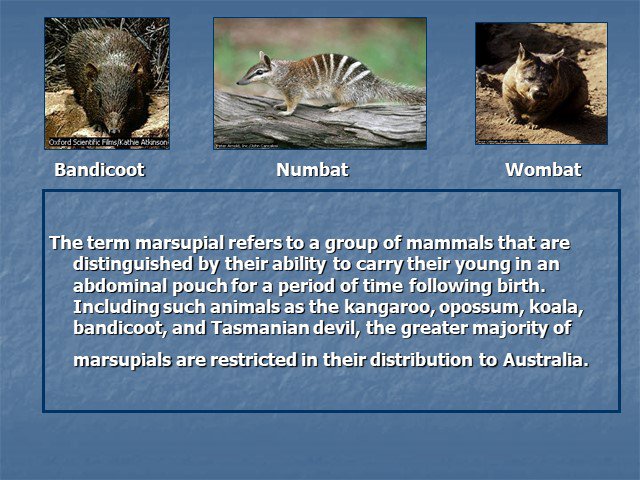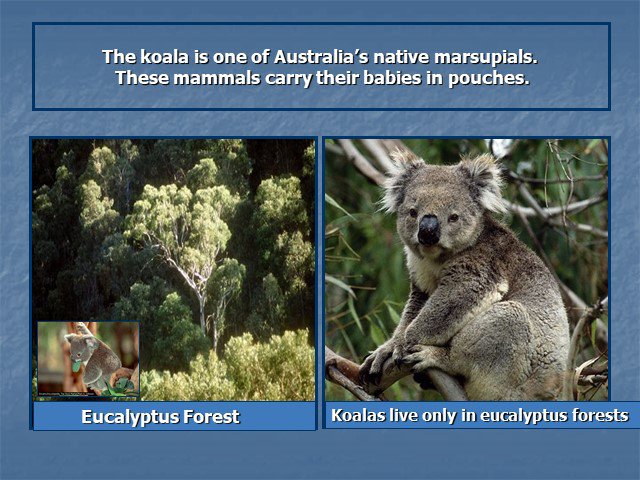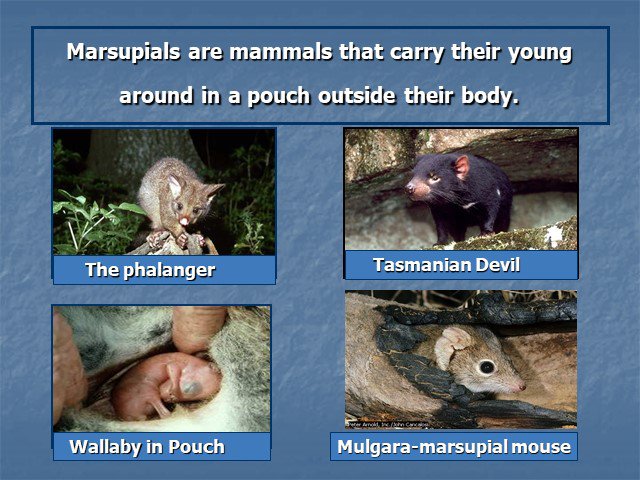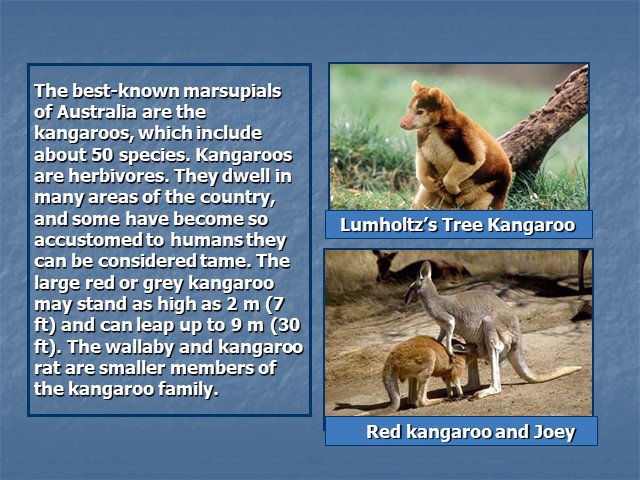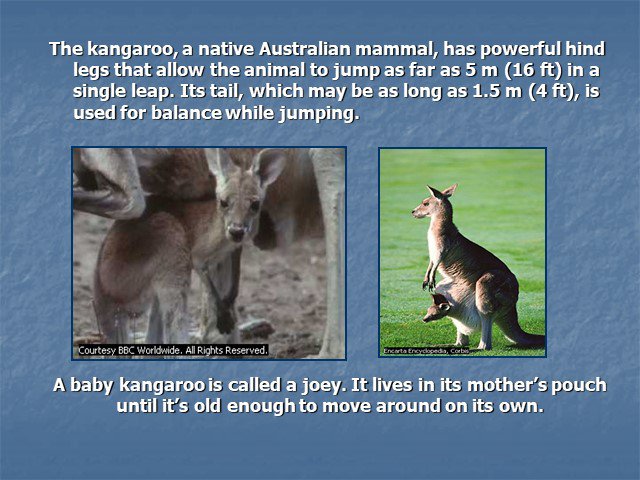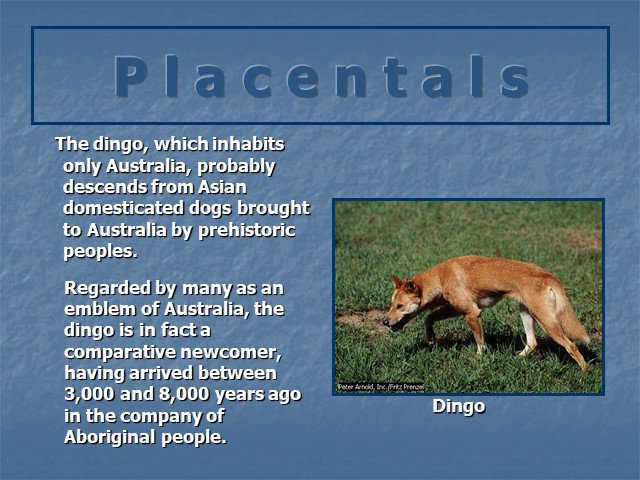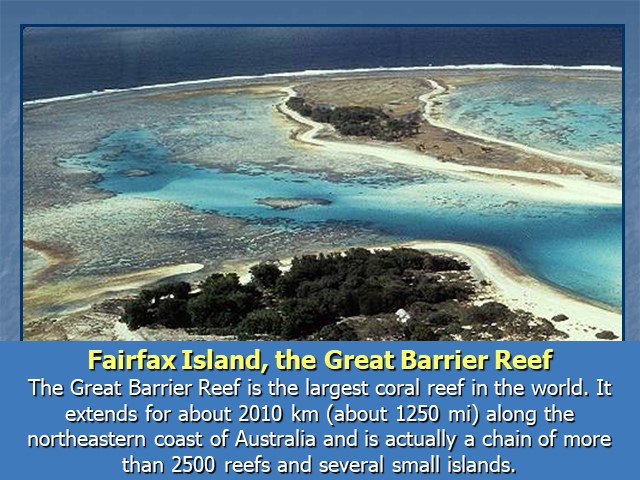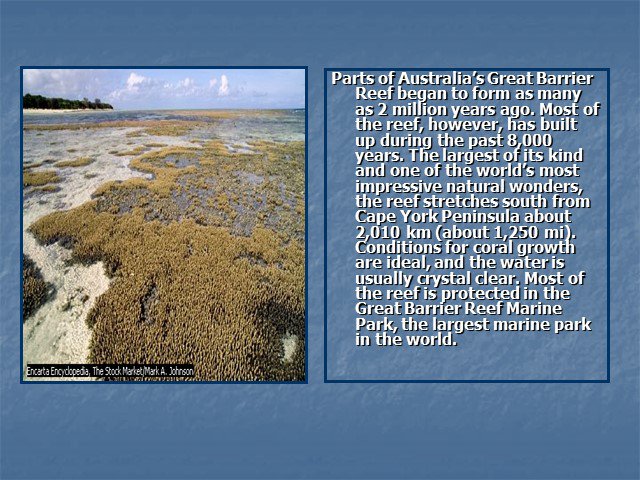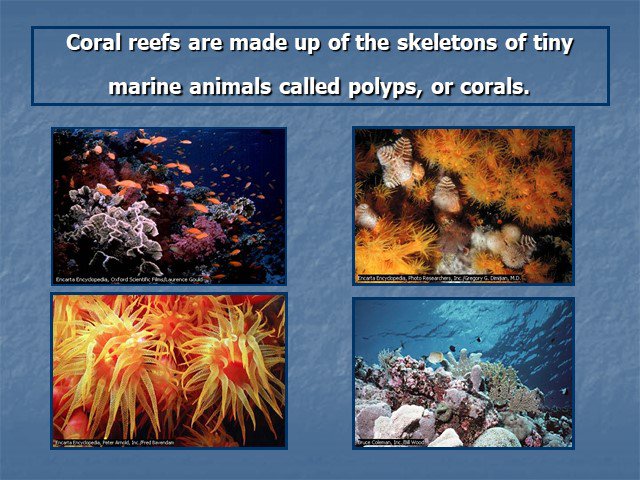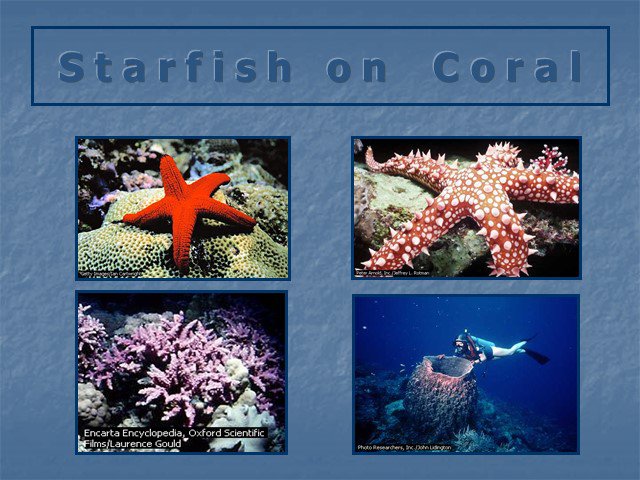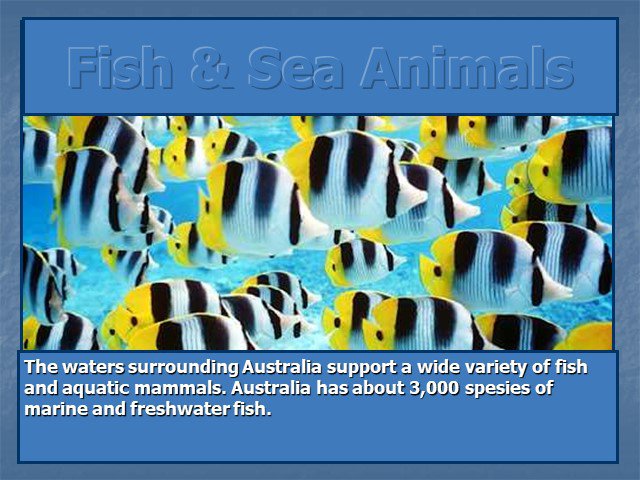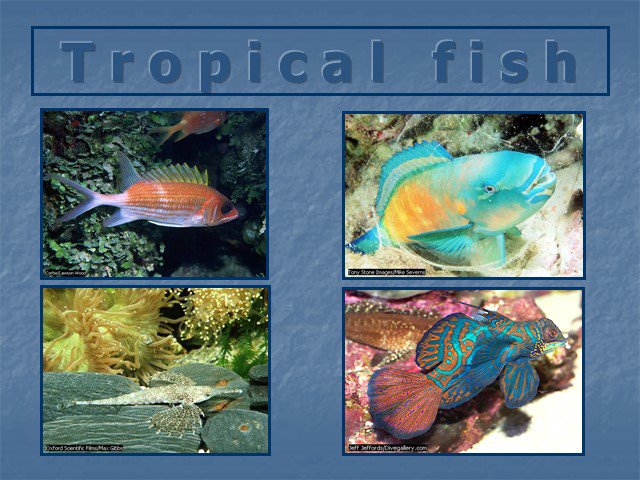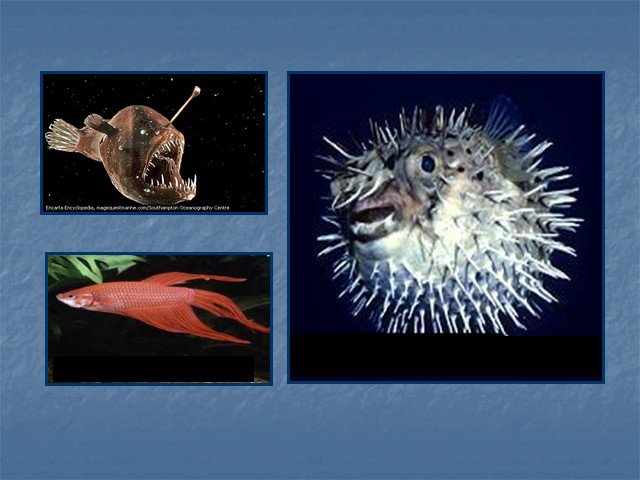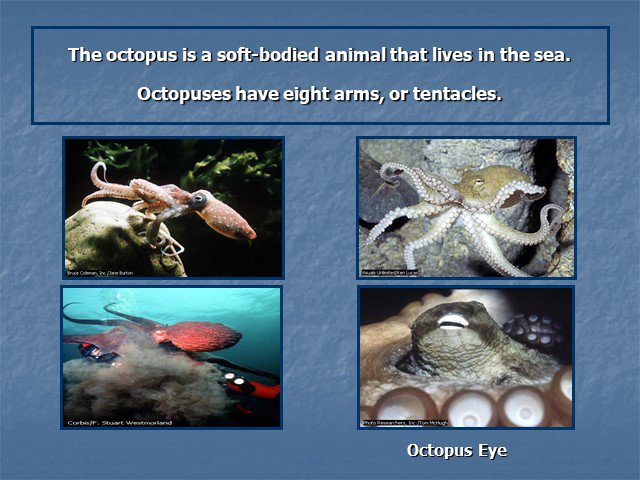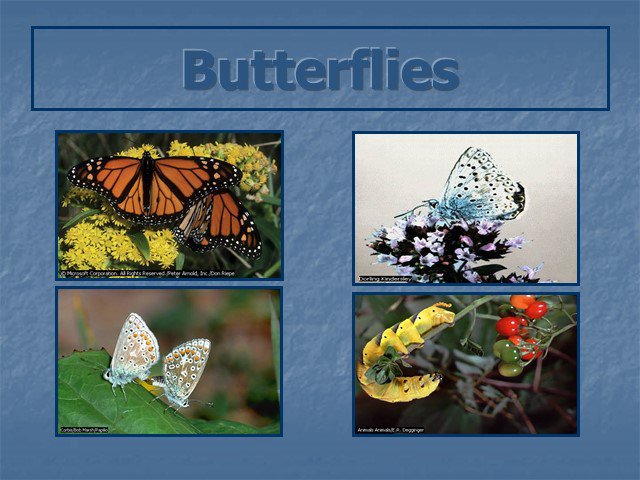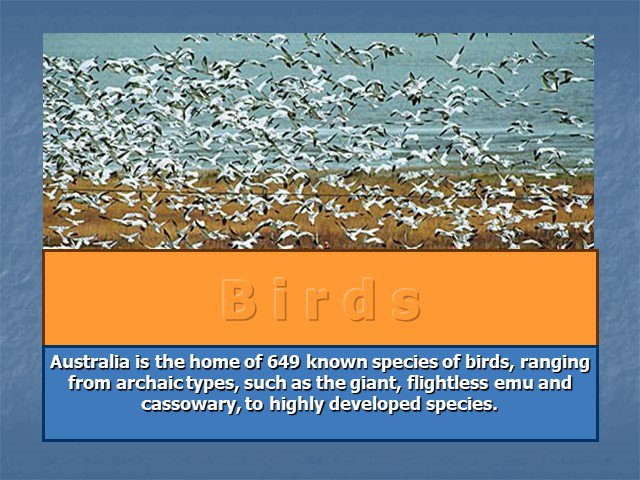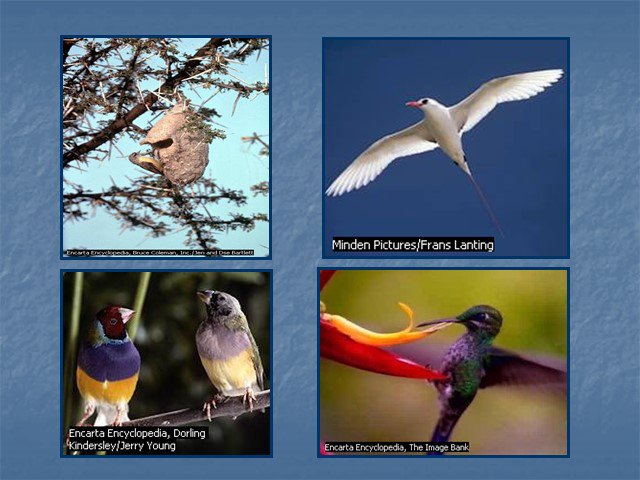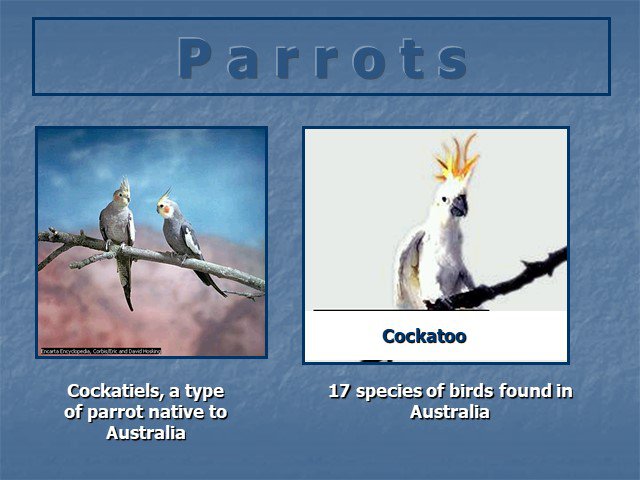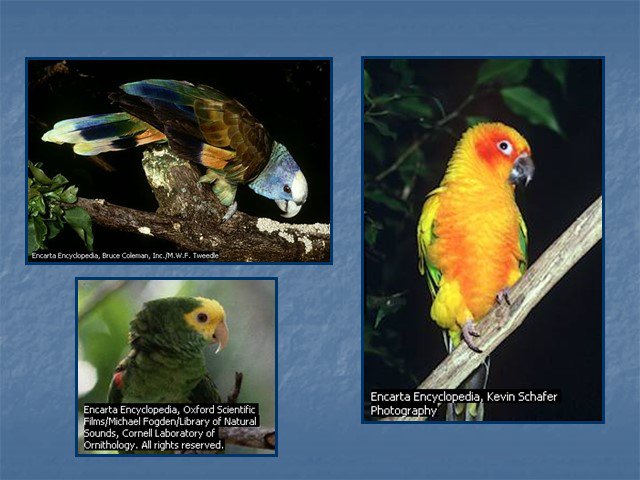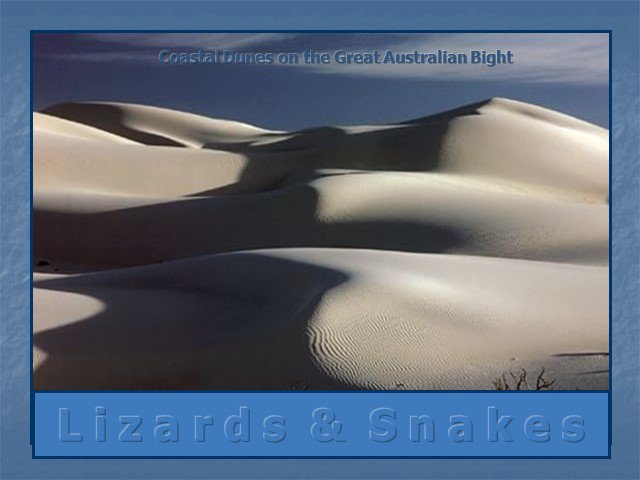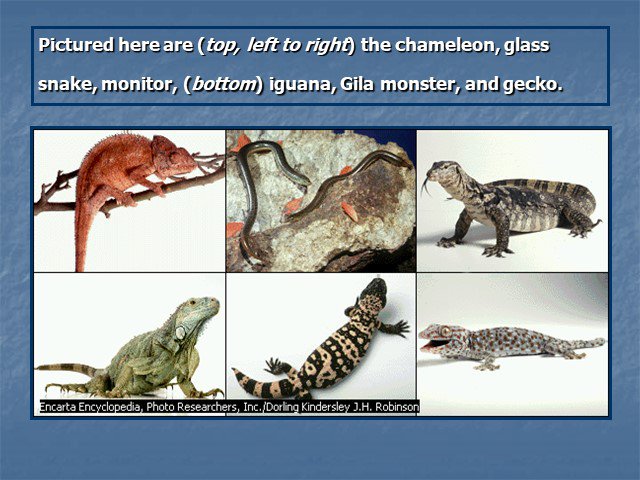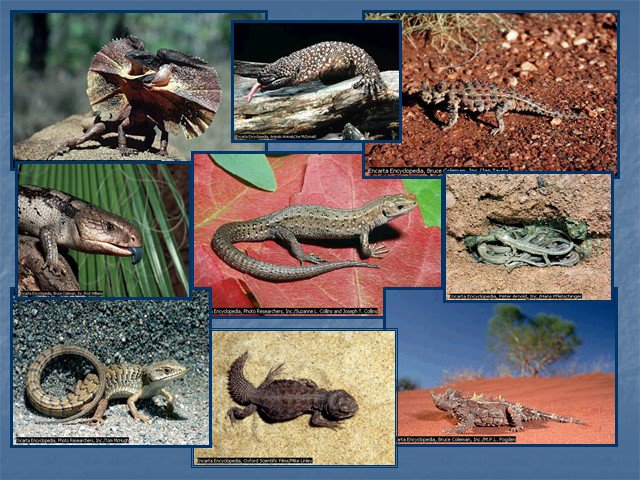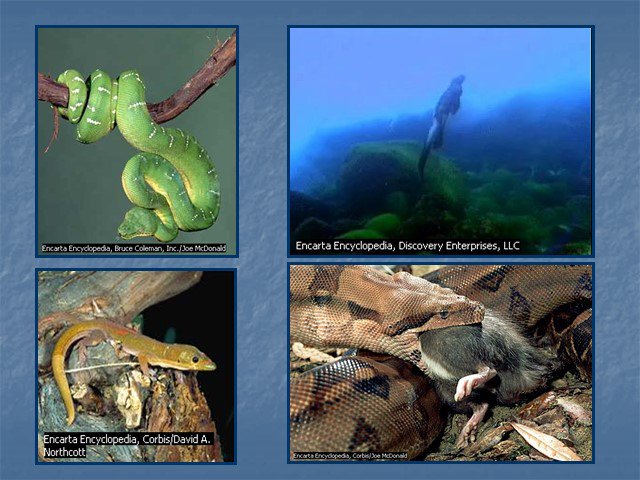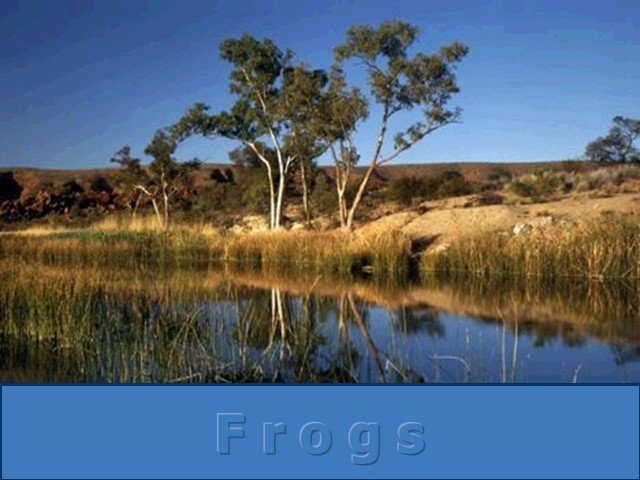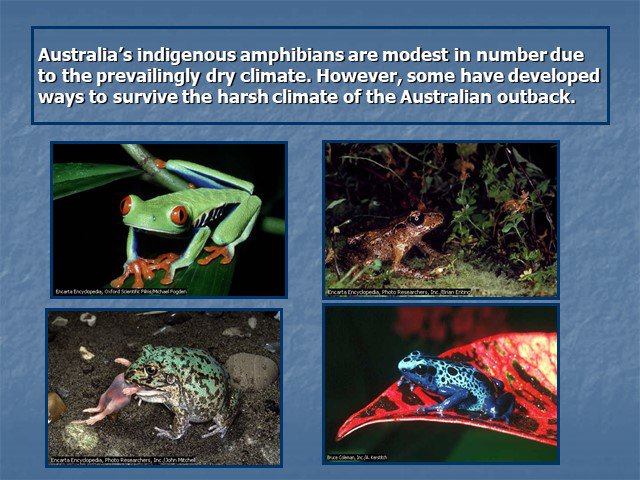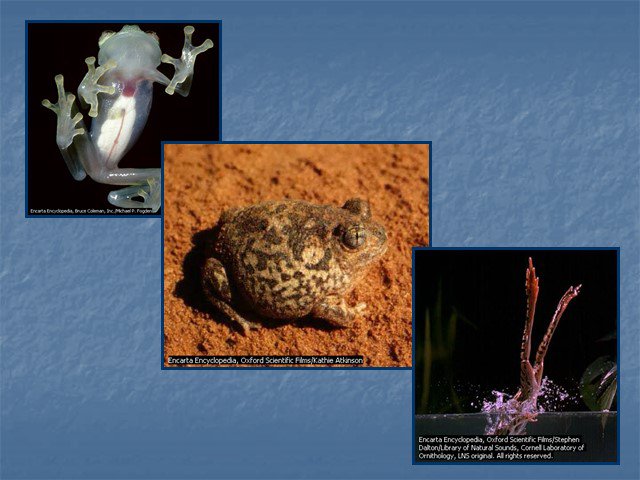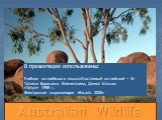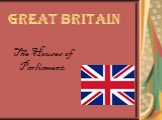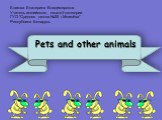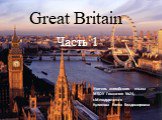Слайд 1Australian Wildlife
Слайд 2G l o s s a r y
Mammals –млекопитающие Insects - насекомые Reptiles -пресмыкающиеся Amphibians – земноводные Marsupials – сумчатые Monotremes - одноапертурные Placentals - плацентарные Diversity - разнообразие To lay eggs - откладывать яйца Abdorminal pouch - сумка. мешочек на животе Immature - незрелый
Слайд 3Hind legs – задние ноги Munch - жевать Suckle - выкармливать Tame - ручной Endemic – свойственный данной местности Herbirous – травоядный Tiny – крошечный Species – виды Soft shelled (eggs ) – в мягкой оболочке Descend – происходить от…
Слайд 4A LAND OF STRANGE ANIMALS
Australia is famous for its many unusual animals. If you visit, you might see a kangaroo hop past. Kangaroos use their powerful hind legs to hop at speeds up to 30 miles per hour (48 kilometers per hour)! If you look up in a eucalyptus tree, you might see a koala happily munching on leaves. Koalas resemble small bears, but they are not related to bears. Even the names of the animals in Australia are strange. Can you imagine seeing a wallaby, wombat, quokka, bandicoot, dingo, or Tasmanian devil? The most unusual animal might be the platypus. It has a body like an otter and a bill like a duck.

Слайд 5A large proportion of Australia’s native animal species exist nowhere else in the world. Of Australia’s animal species, it is estimated that 84 percent of mammals, 89 percent of reptiles, 93 percent of frogs, and 45 percent of birds are endemic.
Australia has nearly half a million species of plants and animals – one of the greatest varieties of any country in the world.
Слайд 6M a m m a l s
Uluru is one of the biggest rocks in the world. It measures about 2.2 miles (3.6 kilometers) long!
Слайд 7Mammals all produce milk to suckle their young. Mammals have fur or hair. There are three types of mammals and examples of each type are found in Australia.
Monotremes are mammals that lay soft shelled eggs. Marsupials are mammals that give birth to young which are in immature state. Females often carry them in pouches. Placentals are the mammals whose young are born in a more developed state, and produce a placenta.
Слайд 8M o n o t r e m e s
Слайд 9Monotreme, common name applied to a group of egg-laying mammals, including the platypus, or duckbill, and the echidnas, or spiny anteaters.
Platypus Short-Beaked Echidna
Слайд 10M a r s u p i a l s
Слайд 11The term marsupial refers to a group of mammals that are distinguished by their ability to carry their young in an abdominal pouch for a period of time following birth. Including such animals as the kangaroo, opossum, koala, bandicoot, and Tasmanian devil, the greater majority of marsupials are restricted in their distribution to Australia.
Wombat Bandicoot Numbat
Слайд 12Eucalyptus Forest
The koala is one of Australia’s native marsupials. These mammals carry their babies in pouches.
Koalas live only in eucalyptus forests
Слайд 13Marsupials are mammals that carry their young around in a pouch outside their body.
The phalanger Tasmanian Devil Wallaby in Pouch Mulgara-marsupial mouse
Слайд 14The best-known marsupials of Australia are the kangaroos, which include about 50 species. Kangaroos are herbivores. They dwell in many areas of the country, and some have become so accustomed to humans they can be considered tame. The large red or grey kangaroo may stand as high as 2 m (7 ft) and can leap up to 9 m (30 ft). The wallaby and kangaroo rat are smaller members of the kangaroo family.
Lumholtz’s Tree Kangaroo Red kangaroo and Joey
Слайд 15A baby kangaroo is called a joey. It lives in its mother’s pouch until it’s old enough to move around on its own.
The kangaroo, a native Australian mammal, has powerful hind legs that allow the animal to jump as far as 5 m (16 ft) in a single leap. Its tail, which may be as long as 1.5 m (4 ft), is used for balance while jumping.
Слайд 16P l a c e n t a l s
The dingo, which inhabits only Australia, probably descends from Asian domesticated dogs brought to Australia by prehistoric peoples.
Dingo
Regarded by many as an emblem of Australia, the dingo is in fact a comparative newcomer, having arrived between 3,000 and 8,000 years ago in the company of Aboriginal people.
Слайд 17Fairfax Island, the Great Barrier Reef The Great Barrier Reef is the largest coral reef in the world. It extends for about 2010 km (about 1250 mi) along the northeastern coast of Australia and is actually a chain of more than 2500 reefs and several small islands.
Слайд 18Parts of Australia’s Great Barrier Reef began to form as many as 2 million years ago. Most of the reef, however, has built up during the past 8,000 years. The largest of its kind and one of the world’s most impressive natural wonders, the reef stretches south from Cape York Peninsula about 2,010 km (about 1,250 mi). Conditions for coral growth are ideal, and the water is usually crystal clear. Most of the reef is protected in the Great Barrier Reef Marine Park, the largest marine park in the world.
Слайд 19Coral reefs are made up of the skeletons of tiny marine animals called polyps, or corals.
Слайд 20S t a r f i s h o n C o r a l
Слайд 21Fish & Sea Animals
The waters surrounding Australia support a wide variety of fish and aquatic mammals. Australia has about 3,000 spesies of marine and freshwater fish.
Слайд 22Great White Shark Dolphin Blue Whale
Слайд 23T r o p i c a l f i s h
Слайд 25The octopus is a soft-bodied animal that lives in the sea. Octopuses have eight arms, or tentacles.
Octopus Eye
Слайд 27B i r d s
Australia is the home of 649 known species of birds, ranging from archaic types, such as the giant, flightless emu and cassowary, to highly developed species.
Слайд 28Laughing Kookaburra of Australia This well-known bird of woodlands and farmlands in Australia emits fiendish screams, which sound like laughter, at dawn and sunset.
Emu
The emu is a large flightless bird native to Australia. Emus roam the western half of the continent in mass movements that may involve as many as 70,000 birds
Слайд 30P a r r o t s
Cockatiels, a type of parrot native to Australia
17 species of birds found in Australia
Cockatoo
Слайд 32L i z a r d s & S n a k e s
Coastal Dunes on the Great Australian Bight
Слайд 33Pictured here are (top, left to right) the chameleon, glass snake, monitor, (bottom) iguana, Gila monster, and gecko.
Слайд 37Australia’s indigenous amphibians are modest in number due to the prevailingly dry climate. However, some have developed ways to survive the harsh climate of the Australian outback.
Слайд 39В презентации использованы: Учебник английйского языка»Счастливый английский – 3» Татьяна Борисовна Климентьева, Джилл Шэннон «Титул» 1998 г. Электронная энциклопедия «Encarta 2006»








